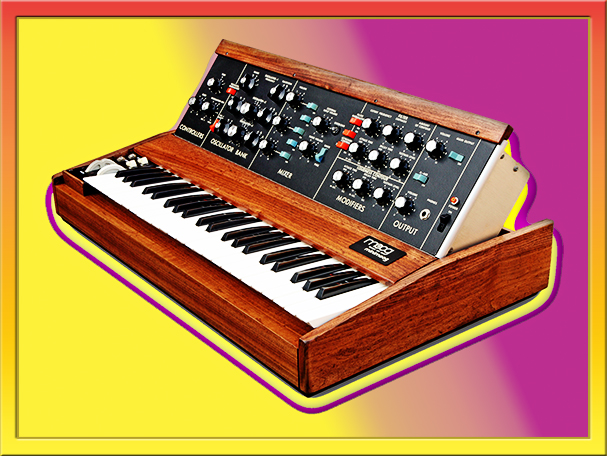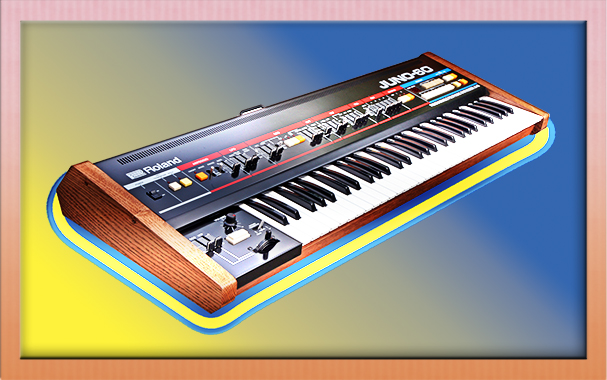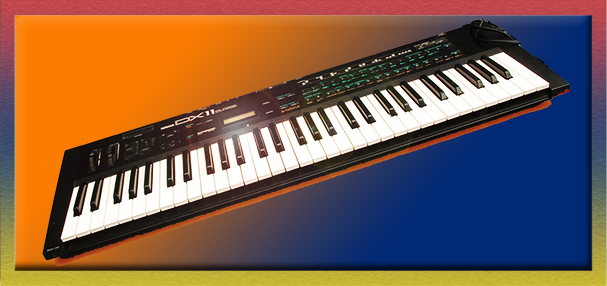Synthetic Musings
Analogue vs. Digital
From the very outset, a fully fledged analogue synthesiser enabled our ears witness electricity sculpted by oscillators, coloured by filters and envelopes rattling through resistors and cruising around circuitry in real time.
Minor voltage irregularities were liberally subsumed and served to enhance the fuzzy, organic warmth adored by all with a soul – no bias intended! The result might well have verged on a grotesque parody of the advertised “strings” or “brass” but the sound itself, formulated in a domain of sample-less purity, could claim to be similarly “infinite” in scope and posses many acoustic attributes.
No matter how seductive its appearance, resplendent its LCD or plentiful and functional its switches, knobs and sliders, it was and remains in a digital synthesiser’s nature to eternally repeat precisely what was commanded during its militant and sterile genesis.
A collection of compact recordings, strategically looped and stored in read only memory (ROM) has fixed dimensions that by logic alone would imply its terminal inferiority to analogue randomness. But a true digital thoroughbred houses hundreds, even thousands of samples, painstakingly garnered from sources of the highest quality, expertly calibrated and seamlessly tessellated to create a virtual instrumental wonderland whose proportions and authenticity exceeds anything remotely possible in raw analogue.
Thus, in a debate where every argument is engaging and learned and subjectivity always justified, the notion of a victor is as repugnant as roaring silence.
Monypolymulti-nihili-amplification.
Before reviewing the capabilities of any synthesiser, especially those with a digital heritage, it is important to distinguish between two ubiquitous terms that are a cause for understandable confusion, polyphonic and multitimbral.
Meet the mythical Minimoog an angelic work of analogue art and veritable saint amidst sagacious synth searchers. The Minimoog is famously and endearingly “monophonic”. In absurdly flowery terms, no matter how many of those 44 ravishingly responsive keys or delectable dials your dainty digits press and twist, its fabled, emotive and infinitely versatile voice only emit one note at a time.

Polyphonic
Ambling further down the corridor of analogue antiquities roundly rewards us with a second redoubtable relic. The Juno 60, one of the earliest practitioners of electronic “polyphony” and Roland’s débutante. A polyphonic synthesiser can produce multiple tones simultaneously and the tones themselves might consist of several individual layers or “voices”. While a fraction less sought after and arresting to the eye than the Minimoog, the Juno afforded all with six errant fingers the chance to conjure up a sublime hexa-chorus of creamy 80s chedder.

Venturing briefly into the acoustic realm offers a cogent analogy. Imagine a gleaming concert Steinway nobly awaiting its gallant soloist’s rendition of Rachmaninoff’s 3rd. Throughout the performance, we’d savour voluminous virtuosity, scintillating trills, snarling octaves, the ultimate in polyphonic pyrotechnics.
The pianist would use the pedals to sustain scales and chords, creating colourful “washes” of sound over which melodies would soar, or to realign the entire keyboard, forcing the hammers to strike two strings per note instead of the usual three and thereby induce subtle variations in timbre.
Think of the strings and pedals as organic counterparts to the Juno 60s voices, buttons and faders, which in the same fashion, a skilled synth artist would manipulate to control oscillators and filters and bring about their own textural transformations. Yet as an instrument, like the formidable concert grand, it remained limited to a singular timbre at any given moment.
Multitimbral
A tremulous trot toward the third and ultimate exhibit ushers us into a nascent digital dominion, where we encounter Yamaha’s venerable DX11, a flamboyant 61 key fanfare of FM fun and multitimbrality in fine, if fledging form. A modest octet of voices might have been all it could muster but this time, even when piping in parallel, every faithful choir member passionately projected a unique sonic signature.

In midi terms, multitimbral denotes a synthesisers faculty to receive midi data via exclusive channels, generate the requested tones and their characteristics simultaneously and route them to dedicated or communal outputs.
For detailed sequencing tasks, this feature could well prove a lifesaver since in essence, it is akin to having dozens of physically separate instruments with independent expressive potential amicably packed into a single module. One could for instance, have a USB MIDI interface with multiple inputs anchored to a computer, fire up a multi-track template on Sonar, then designate each track to receive unique incoming signals from an especially talent laden performance, involving a blend of pre-sequenced midi content and human virtuosos vehemently vying for their own bite of the blues, before using the software to assign those signals to a multi timbral synth connected to the same system.
Returning to our concert paradigm now allows us to pinpoint a vital discrepancy. Where a polyphonic synth could enact the Steinway – assuming a stunningly authentic piano sample set – one mutitimbral device could theoretically emulate the rest of the orchestra. The strings, woodwinds, brass and percussion, each concurrently tending to a melodic or accompanying line, whilst retaining its unique textures and nuances throughout the interpretation.
So, what did the rational side of my conscience instruct as our meandering midi pilgrimage commenced? To seek out and solve the mysteries of Monophonic, Polyphonic and Mutitimbral. It would appear with all three vows fulfilled and an ambitious side quest to summarise analogue and digital artfully completed en-route, we can at last recline and revel in some tempting trinkets of actual audio.
Pages: 1 2




